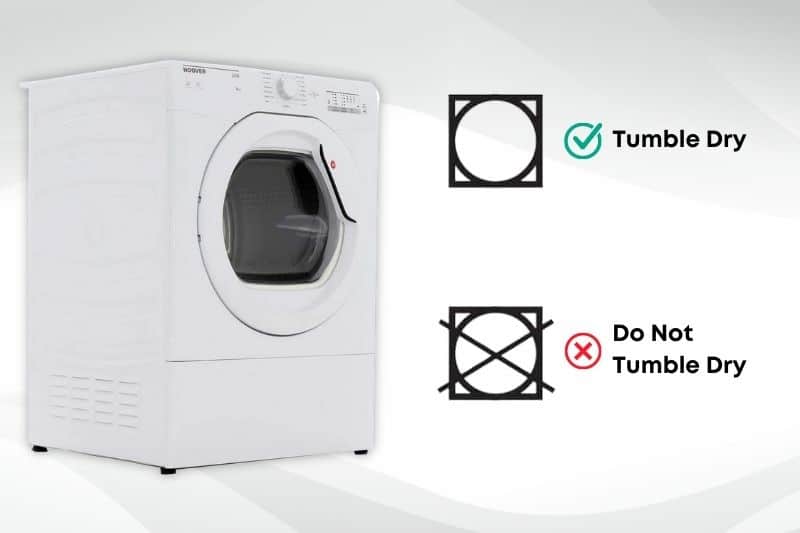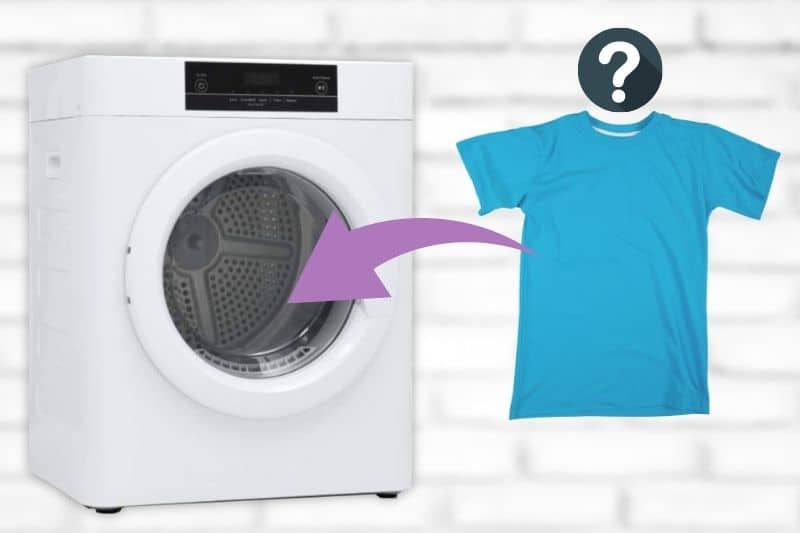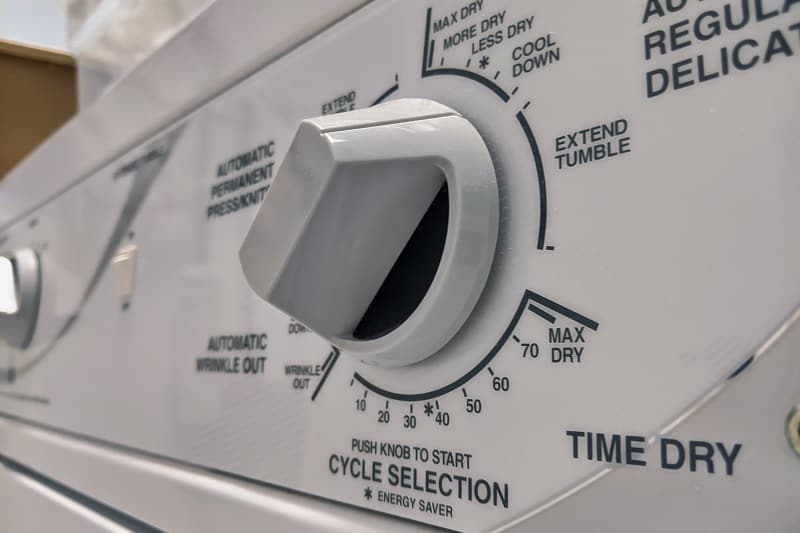Not all clothes are made equal. While some garments can easily withstand a cycle in the tumble dryer, others are susceptible to shrinking or tearing. If you’re wondering whether it’s okay to tumble dry your shirt, check the fabric it’s made from.
You can tumble dry dress shirts safely if you use a gentle, low-heat cycle. Most shirt materials should be okay to tumble dry, excluding silk. Check a shirt’s label for its drying instructions; look at the tumble dryer symbol to see if the shirt can be tumble dried.
I’ll now detail some tips for tumble drying shirts effectively. Plus, I’ll answer some additional questions to help you tumble dry shirts without an issue.
For example, I’ll tell you about the meaning behind drying symbols and which fabrics should be kept out of the tumble dryer.
Tips for Tumble Drying Shirts
1. Check the label
Most clothes come with a manufacturer’s label stitched to the inner seam on the side of the garment. This label should provide care instructions for the clothing, including how the fabric should be dried.
Check the shirt’s drying symbol. If it feels like you’re trying to read ancient hieroglyphics, let me help you figure it out! Your shirt’s label should have five different symbols, and the drying instruction should be on the third symbol.
2. Understand the drying symbols

There are six main drying symbols that can be on clothing labels, and they’re all surrounded by a square. If the square has a circle inside it, your shirt can safely be tumble-dried.
Your shirt’s label will probably have a single dot within the circle, meaning that your shirt should be tumble-dried on low heat.
It may also have two lines underneath the square, signifying a gentle drying cycle. If there’s one line under the square, you should use a synthetics cycle.
A cross over the circle tells you that your shirt can’t be tumble dried, and you’ll instead need to air-dry it. The label might also provide specific instructions for natural drying, all within a square.
One horizontal line is for drying flat, three vertical lines mean you should drip dry, and a curved line at the top of the square tells you to line dry.
What’s the Difference Between Line Dry and Drip Dry?
If your shirt has been denied access to the tumble dryer, you might wonder what the natural drying instructions mean.
Line dry and drip dry both involve hanging the shirt up to dry, but a shirt that is line-dried should be smoothed out with your hand before it’s hung up to avoid it drying into an awkward shape. A drip-dried shirt can simply be hung up immediately after washing, no shaping required.
Be gentle

If the tumble-drying symbol doesn’t have any dots in the centre of the circle, it can be dried on any heat setting. However, I’d still recommend using a low heat setting on your dryer.
Shirts are prone to shrinking and creasing, so a high heat setting will cause the fabric’s fibres to bunch together and possibly ruin your shirt.
It’s also a good idea to use a gentle drying cycle, to avoid micro-tears in your shirt. Those tiny rips cause lint to come off your clothes and can make your shirt look worn and patchy. Preserve your pristine shirt by being gentle with it!
Don’t over-dry
Over-drying your shirt can heat-damage the fibres and cause your garment to shrink.
To keep your shirt in top shape, take it out of the tumble dryer while it’s still a bit damp. Then, iron the shirt to both remove the remaining moisture and smoothen out the fabric.
However, you shouldn’t iron any fabric with a crossed-out ironing symbol!
Use dryer balls

Having your shirt crackling with static and clinging to your body is an uncomfortable experience. Dryer sheets and fabric softeners are designed to neutralise static charge, but they’re not great for your clothes or dryer in the long run. Plus, they’re typically one-use and environmentally unfriendly.
Instead, get a soft, static-free shirt by tossing a few dryer balls into the tumble dryer. Wool dryer balls are reusable and hypo-allergenic, and they can keep the fabric smooth and without static.
Dryer balls will lessen your drying time by 10 to 25 percent, so be wary of over-drying, which is the biggest culprit behind the static charge.
Dryer balls are a worthwhile investment since they last for around one thousand drying cycles, so they’ll keep your shirts healthy for years.
Which Fabrics Shouldn’t Be Tumble Dried?
Typically, shirts will be made from a cotton or synthetic blend and can be tumble-dried on a gentle, low heat cycle for good results. Other fabrics can be trickier to dry, though.
Here are some rarer shirt materials which shouldn’t be tumble dried.
- Delicate Fabrics. Keep your silk shirt away from the tumble dryer unless you want deep unremovable wrinkles. The same goes for shirts with lace or net detailing.
- Sequins and Beads. If your shirt has metal or plastic attachments, like beads or sequins, dry the garment naturally to stop the embellishments from melting or falling off in the dryer.
- Wool and Yarn. Wool is highly vulnerable to shrinking, and once the natural fibres have shrunk it’s almost impossible to expand them again.
- Animal Fur and Leather. Your statement leather shirt won’t look so cool when it’s been cracked and deformed by the tumble dryer – unless you’re going for the grunge look. The animal hide under natural fur is prone to similar cracking, causing fur to fall out.
Conclusion
Most cotton and synthetic blend shirts can be tumble-dried, but you should always check the clothing label to ensure that the fabric can handle the heat.
It’s also wise to dry shirts on a gentle spin, low heat cycle, and remove them before they’re completely dry to avoid shrinking.
If in doubt, dry your shirt naturally!

A recent uni graduate who likes writing, gaming, and drawing. I’m figuring out housekeeping tips alongside you while trying to provide eco-friendly cleaning options. Let’s find out how to use a tumble dryer together!






